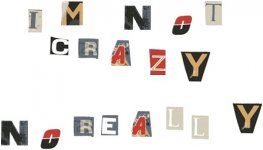EXACT means something different. It means you can program a robot to follow the steps and get to the right line--i.e., get the bridge hand in the right spot. That's not the case here.
It's nice to see somebody agree that CTE/ProOne can't be accurately analyzed with plane geometry. Thank you.
I assume that "bridge hand" means something more specific such as "the point on the hand over which the cue will slide during the stroke." In that case, that's certainly my understanding of the goal of CTE/ProOne. It's unfortunate people have ignored that idea, preferring to concentrate on pivot points (which aren't necessary), initial cue orientation (which is meaningless), etc. I can see reasons Stan Shuffett may have wanted to use pivoting for pedagogical purposes, but I'd rather have had a clear, explicit statement about the goal of locating the bridge point
before the mechanics of learning how to get there were discussed.
As for programming a robot to follow the procedure and correctly locate the bridge point.... It certainly
is not the way you'd program a robot to "aim" unless having the robot test the procedure was the point of programming it to begin with (or some similar thing such as testing robotic vision systems, etc).
However, I'm not convinced it can't be done. The question rests on what I consider to be CTE/ProOne's fundamental contention:
That once the player is correctly positioned by following the prescripts of the methodology, then the CB-to-GB line is offset a short distance (1/2" or so) from the player-perceived CTE line, at least within some short linear range that falls within what most people would consider a reasonable bridge length.
I have no idea whether Stan would agree with that, or whether he thinks about his system in this way at all. It is, however, what I extracted from the DVD, mostly by watching very carefully what people actually did rather than worrying too much about what was said. If that contention is true, however, then the bridge point is calculable by a robot.
Now that I think of it, the robot can find the bridge point even if the contention is not true. If the distance between the CB-to-GB line and the CTE line varies too rapidly with the shot angle to consider the distance constant, it wouldn't take many tests for the robot to discover the function needed for determining it at some fixed point behind the cue ball based on some useful angle - the perceived convergence angle of the CTE and secondary sight lines seems a likely first candidate.
